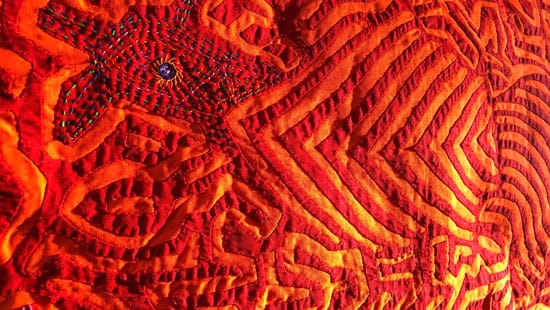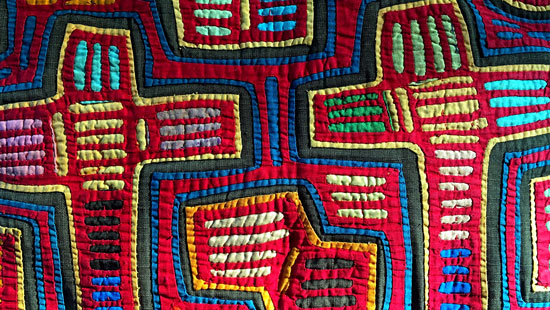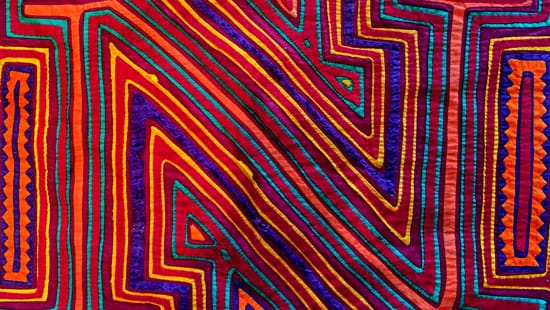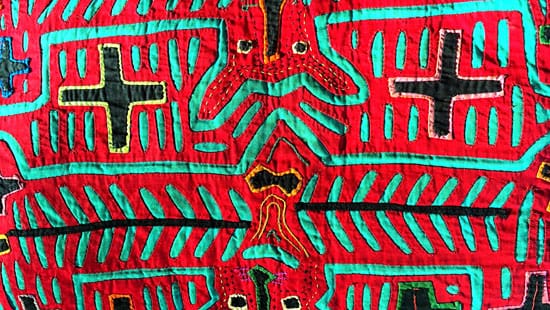
The land rises from turquoise Caribbean waters up to lush tropical jungles and colourful volcanic valleys encircled by cloud forests. Take a trip to Panama and you'll experience one breathtaking view after another. The natural brilliance of the country - of its flora, fauna and people, is also prominent in its indigenous arts. The most brilliant of all: the mola, intricately handcrafted textiles of the local Guna tribe.
First, a little history

The Guna Indians (frequently referred to as the Kuna, their former name) are a small tribe who inhabit the chain of 350 islands that constitute the Guna Yala, located just off Panama's Atlantic coast. Known to most foreigners as the San Blas Archipelago, the islands changed name in 2011 when the Panamanian government officially recognized the tribal name for the region.
There are fewer than 300,000 Guna members in all, 50,000 of whom are spread out amongst 49 of the largest islands. The Guna can also be found along the east coast of Panama from Colon to Columbia. Likely the descendants of the Carib Indians who inhabited Panama and Columbia, the Guna are one of the last remaining tribes of the Caribbean. Sadly, their future is uncertain due to the rising waters inundating their low-lying islands due to climate change.
How the mola came to be

The Spaniards arrived in this region in the 15th century, bringing with them, among other things, cloth. Prior to their arrival, the Guna had long practiced traditional body painting. With the introduction of cloth, those skills were soon transferred to fabric and the mola was born.
In Guna, mola means clothing, but long ago it meant bird plumage. One look at the bright shades unique to their handiwork and it's easy to imagine the most striking birds of the region being an inspiration.
What makes it special

This centuries-old craft is a form of reverse appliqué that begins with as many as seven layers of different coloured cotton fabric. The layers are sewn together to form a panel, which is then cut carefully by hand to reveal the vibrant colours beneath in patterns that are then stitched and sometimes embroidered over the top.
Patterns are typically abstracts, geometric shapes and patterns inspired by plants, and animals and plants from Panama and Colombia - turtles, birds, fish, and so on. Depending on the design, mola can take weeks and even months to create.
More and more rare

The Guna women head a matriarchal society that relies on them as breadwinners, making their mola handiwork all the more valuable. They wear these eye-catching panels on traditional blouses, limited to the native community as a way to retain their cultural heritage.
However, mola panels are often recycled into pillows and artwork once their owners have tired of wearing them, and then sold in a few marketplaces as souvenirs. Increasingly, these pieces are seldom spotted outside of museum collections. Join us, and you'll have the rare opportunity to purchase molas from the very artisans who created them.

